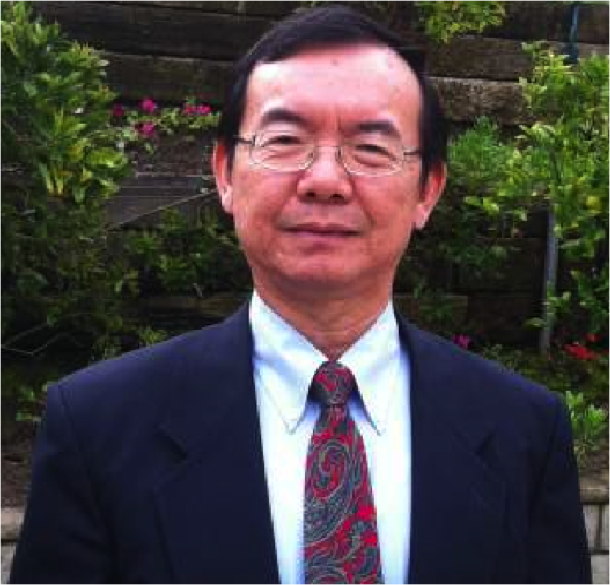Tutorials
Monday, 8 July 2013
08:30 - 12:00
-Tutorial I: Fiber Optics in Datacenter Networks
13:30 - 15:00
-Tutorial II: Software-Defined Networking (SDN)
15:30 - 17:00
-Tutorial III: Software Defined Networks Enabled by Optical Transport and Switching
Tutorial I: Fiber Optics in Datacenter Networks
Time: 08:30 - 12:00, Monday, 8 July 2013
Abstract:
This tutorial starts with the introduction of the network transformations resulted from the rise of Internet computing applications. We then review the architectural structures of warehouse-scale computers (WSCs) and the fiber optic networking technologies used to scale the performance and deployment of WSC datacenters. This tutorial covers the challenges facing datacenter operators, the need for energy efficient datacenter, and the optical networking technologies required to sustain the growth of Internet computing applications.
Speaker: Dr. Cedric F. Lam
Biography:

Dr. Cedric F. Lam is currently Tech Lead Manager at Google. He manages the Advanced Technology Group of Google Fiber to develop scalable and cost-effective next generation FTTH technologies to fulfill Google's mission of deploying 1 Gb/s access to broadband customer.
Before joining Google, Dr. Lam was Chief System Architect at Opvista which made ultra-high density WDM transport systems. Prior to Opvista, Dr. Lam was Senior Technical Staff Member at AT&T Labs, Broadband Access Research Department.
Dr. Lam has a PhD from UCLA and B. Eng. (First Class Honors) from University of Hong Kong, both in Electrical Engineering. His current interests include broadband access network architectures, technologies, and datacenter networking.
Tutorial II: Software-Defined Networking (SDN)
Time: 13:30 - 15:00, Monday, 8 July 2013
Abstract:
The rapid growth of heterogeneous services has been driving the demand for new network features, such as flexible routing, agile resource allocation, easy virtualization, good resilience, and strong security. However, the traditional networks have become a hindrance to the adoption of such new features because they are based on aclosed architecture, where the control and data planes are tightly coupled in switches and routers. Consequently, it often incurs high complexity and modificationsto every switch/router to add even a simple feature. For example, it is well known that shortest path routing is not the best way to meet various application needs including load balancing, QoS requirements, and resource utilization. Nonetheless, it is still the dominant approach in practice because there is no easy way to modify the routers to enable customized routing schemes on a per application basis.
Software defined networking (SDN) paints a promising picture to meet such demands. The essence of SDN is to decouple the control plane from the data plane and perform control in a centralized way. It defines an open control interface so as to facilitate interoperability of devices from different vendors. Based on such open architecture, SDN enables high-level abstraction of the network resources so that the design, development, testing, and deployment of new network features are substantially facilitated. In particular, the network hardware complexity is hidden from developers and operators such that they only need to focus on the control and operation software—which is exactly the design objective of software defined networking.
This tutorial will provide an anatomy of SDN, with the goal of giving the audience some insights from both industry and academic perspectives. We will start by introducing the motivation of the SDN designs, including the demand and the related technologies. We will then proceed to explain the concept and framework of SDN. Specifically, we will give an overview of OpenFlow—the most important specification related to SDN. After that, we will present and analyze a few use cases to demonstrate the application and merits of SDN. Finally, we will introduce the latest research and development and conclude the lecture.
Speaker: Kang Xi (Polytechnic Institute of New York University)
Biography:

Kang Xi is Industry Associate Professor in the Department of Electrical and Computer Engineering at Polytechnic Institute of New York University (NYU-Poly). His research interests include data center and cloud computing, high-speed networks, network resilience, routing, and network security. He received his BS, MS and Ph.D. from Tsinghua University in 1998, 2000 and 2003, respectively, all in Electrical Engineering. He has four years of experience in the industry working on Ethernet, IP, and SONET network designs. He worked in Osaka University (Osaka, Japan) as a research associate from 2004-2005. He has been with NYU-Poly since 2005. He holds seven US patents (two pending) and received the ICCCN 2010 best paper award for his work on network resilience. His research has been supported by grants from NSF, US Army, NYU Abu Dhabi, and Huawei Technologies. He has been invited to speak at universities, IEEE seminars, Bell Labs, IBM Research Center, and other seminars. He has been teaching fundamental and advanced networking courses at NYU-Poly. He started teaching a newly designed data center and cloud computing course since 2012 Fall. He was also invited to co-teach a short course on MPLS to an enterprise and received highly positive feedback.
Tutorial III: Software Defined Networks Enabled by Optical Transport and Switching
Time: 15:30 - 17:00, Monday, 8 July 2013
Abstract:
Software defined networks (SDNs) always assume that optical transport systems are at the service of a centralized controller, so that various feature-rich network applications can be easily executed. This assumption is not valid if optical transceivers cannot open up their bandwidth, or if optical switches/ROADMs cannot provide non-blocking switching and routing. In this talk, we will review the state-of-the-art optical transceivers and optical switch/ROADM architectures which serve as the key enablers for SDN.
Speaker: Winston I. Way
Biography:

Winston I. Way is a Fellow of the IEEE and of the Optical Society of America. He pioneered subcarrier multiplexed optical-fiber systems research at Bellcore, and was a professor at National Chiao-Tung University, Taiwan. He founded OpVista Inc. in 2000, and lead a top engineering team to develop DWDM system products, which were later widely deployed in North American cable TV metro ring networks. He joined NeoPhotonics Corporation in 2009, as the Chief System Architect. His current responsibility is to research and develop next-generation ROADM and line/client100G/400G optical transceivers, all based on photonic integrated circuits. He has published a book on Broadband Hybrid Fiber/Coax Access System Technologies, Academic Press, 1998, over 130 journal and conference papers, and owns 30 US patents. He received his B.S. from National Chiao-Tung University and Ph.D. from the University of Pennsylvania.